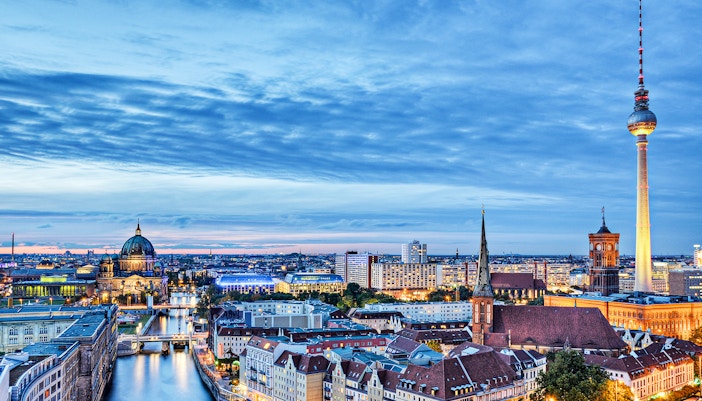
- Friedrichstadt Palast
- Tropical Islands
- Illuseum Berlin
- Sachsenhausen Concentration Camp
- DDR Museum
- Panoramapunkt Berlin
- Big Bus Berlin Hop-on Hop-off Tours
- City Sightseeing Berlin Hop-on Hop-off Tours
- Reichstag Tours
- Berlin Wall Museum
- Berlin Welt Balloon
- Berlin Icebar
- Madame Tussauds
- Samurai Museum Berlin
- LEGOLAND Discovery Centre Berlin
- Fotografiska Tickets
Everything You Need to Know About the Berlin TV Tower
The Berlin TV Tower, or Fernsehturm Berlin, was built between 1965 and 1969 in East Berlin. A socialist modernist landmark, its shaft and sphere showcased East Germany’s ambition and role in Cold War communication. Today, the sphere features a rev...
Also Known As
Berlin Fernsehturm
Founded On
1969
Founded By
Hermann Henselmann
Quick Information
RECOMMENDED DURATION
2 hours
Timings
10:00–23:00
VISITORS PER YEAR
1200000
TICKETS
From € 27.50
EXPECTED WAIT TIME - STANDARD
30-60 mins (Peak), 0-30 mins (Off Peak)
EXPECTED WAIT TIME - SKIP THE LINE
0-30 mins (Peak), 0-30 mins (Off Peak)
Did you know?
Secret bugging device: During the Cold War, the West German intelligence agency discovered that the German Democratic Republic had hidden a listening device in the Tower's sphere. This allowed them to eavesdrop on conversations in nearby government buildings and even the US Embassy. The device was operational for several years until its discovery in the 1990s.
Easter egg lighting: The TV Tower has a quirky tradition during Easter. Every year, the tower's sphere is transformed into a giant Easter egg with special lighting arrangements. This festive touch adds a playful and unexpected element to the iconic structure, delighting locals and tourists.
Original design modification: The original design of the TV Tower included a cross at the top. However, the communist government decided to remove the cross during construction, as it was considered a religious symbol. The decision sparked controversy and was seen as a political statement in the officially atheist German Democratic Republic.
Book your tickets to Berlin TV Tower
Berlin TV Tower highlights
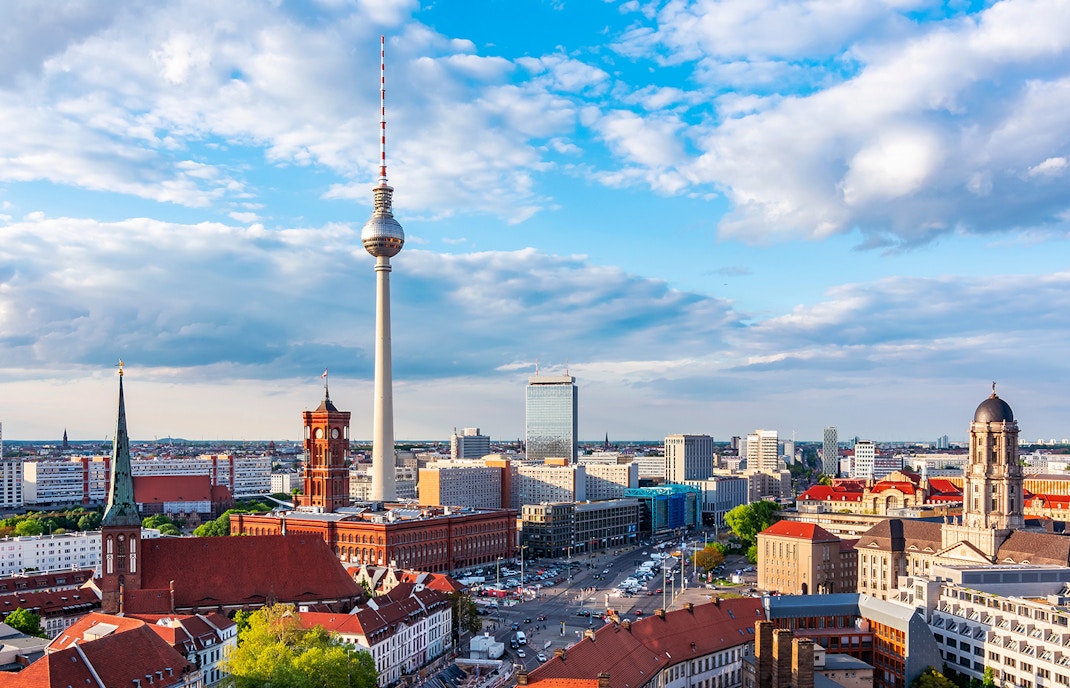
History & construction
Did you know? The Berlin TV Tower was constructed between 1965 and 1969 by the East German government to boost television and radio broadcasting while showcasing Cold War-era engineering. Designed by Hermann Henselmann, the 368-metre tower still holds the title of Germany’s tallest building and ranks among the highest in the European Union.
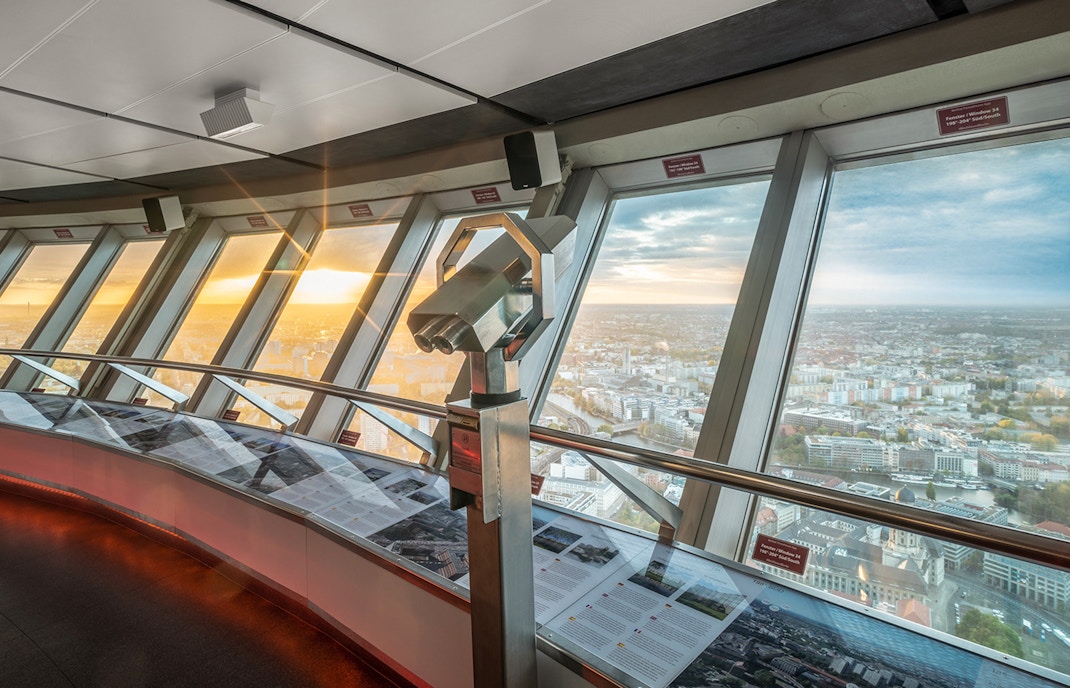
Observation deck
In just 40 seconds, the high-speed elevator at the Berlin TV Tower takes you to the observation deck, where sweeping 360° views of the city unfold before you. Telescopes let you zoom in on landmarks like the Reichstag, Berlin Cathedral, Brandenburg Gate, the Spree River, Tempelhof Airport, and the Olympic Stadium.
Berlin TV Tower Observation deck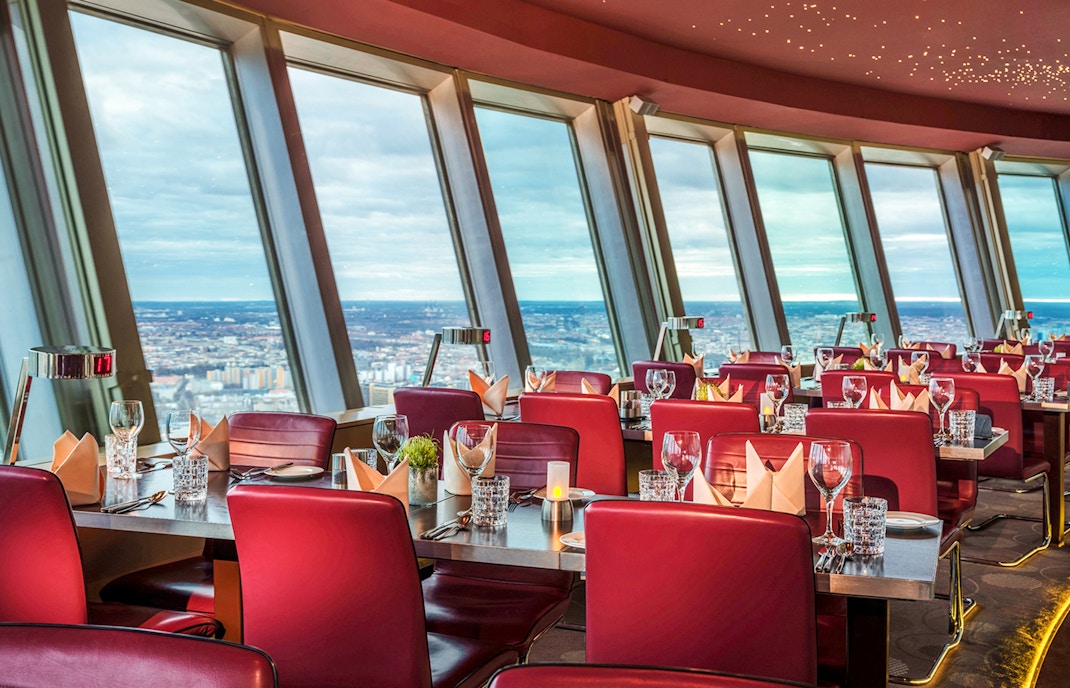
Sphere restaurant
Perched 207 metres above the city, the Sphere Restaurant combines local and international cuisine with sweeping 360° views of Berlin. Its retro-meets-modern design sets the tone, while the revolving floor completes a full rotation every 30 to 60 minutes, ensuring the skyline is always changing as you dine.

Virtual reality experience
Experience the Berlin Odyssey, a thrilling virtual reality tour of the Fernsehturm Berlin. This immersive journey combines 3D animations, reconstructions, and 360° video to take you through nine centuries of Berlin’s history, from the Middle Ages to a divided Germany and the fall of the Berlin Wall. Step back in time and watch the city’s skyline evolve before your eyes.
What can you do at the Berlin TV tower?

Zoom up the high-speed elevator
The high-speed elevator at the Berlin TV Tower is an experience in itself, taking you from street level to the observation deck in just 40 seconds. Traveling at 6 meters per second, it’s one of the fastest in Europe, giving visitors a thrilling sense of lift-off as the city falls away below. The quick ascent builds anticipation, and before you know it, you are 203 meters above ground!
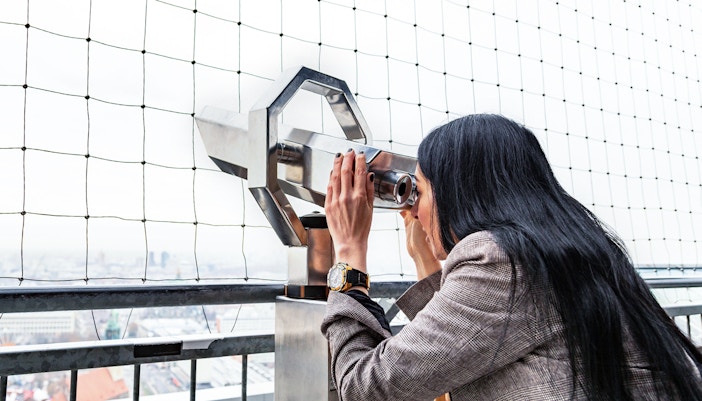
Stand atop the tallest building in Germany
The Berlin TV Tower, or the Fernsehturm Berlin, is the tallest building in Germany. Situated at Alexanderplatz, it was built in the 1960s by East Germany as a symbol of technological progress and national pride. The tower was designed to showcase the strength of the German Democratic Republic and today stands as a landmark representing Berlin’s rich history and remarkable transformation.
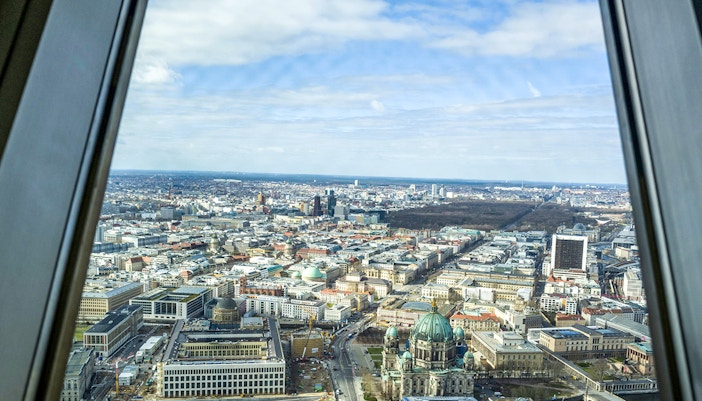
Play the ‘I spot this!’ game
At 203 metres, the TV tower’s observation deck, with floor-to-ceiling windows, lets you take in Berlin from above the clouds. From here, you can spot iconic landmarks such as the Brandenburg Gate, Berlin Cathedral, the Reichstag building, and the Spree River. The city looks particularly magical at sunset and night, offering a view you simply cannot miss.
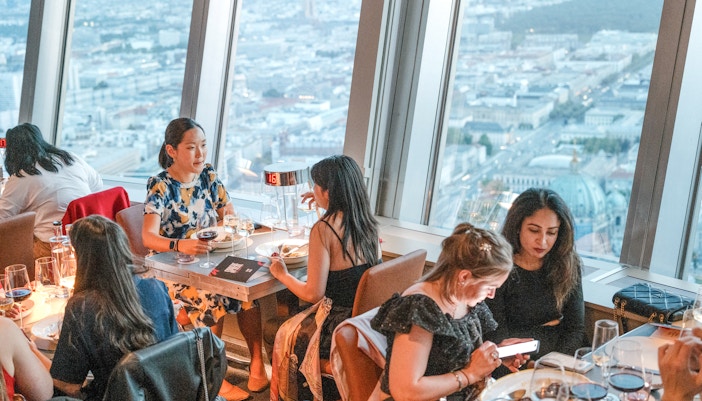
Dine above the clouds
The tower also offers a unique culinary experience at the Sphere Tim Raue restaurant. Located at 207 meters, the restaurant revolves, giving you a 360-degree view of Berlin as you dine. You can enjoy traditional German dishes, seasonal specialties, and a selection of drinks, all served on a menu curated by Michelin-star chef Tim Raue.
Explore the Berlin TV Tower restaurant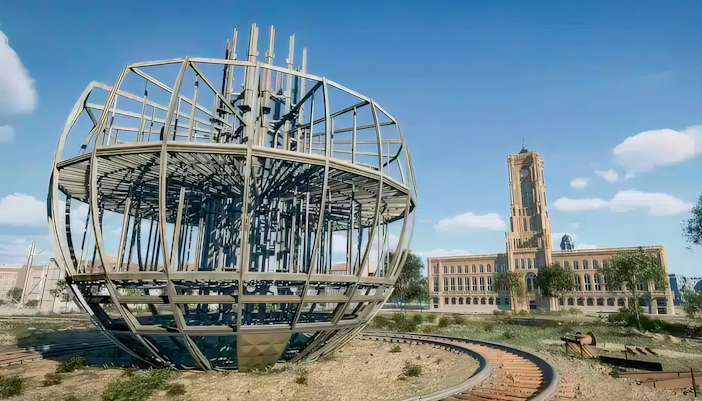
Unlock the VR experience
For a truly engaging experience, the VR attraction “Berlin’s Odyssey” at the TV Tower adds depth to your visit as you gaze out at Berlin. You can travel through nine centuries of the city’s history, from medieval streets and royal palaces to the Cold War and the modern city, gaining a deeper connection to Berlin’s story as you watch short films that bring each era to life.
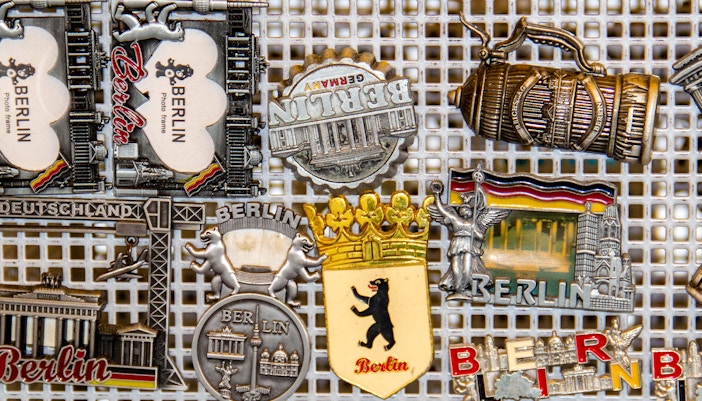
Go shopping
The gift shop at the Berlin TV Tower offers more than quick keepsakes. You can browse miniatures of the Fernsehturm Berlin, magnets, keychains, mugs, and stationery, as well as books that tell the story of the tower and Berlin itself. Many items feature the tower’s distinctive silhouette, making them a meaningful reminder of your visit.
8 must-see Berlin landmarks from the TV Tower observation deck

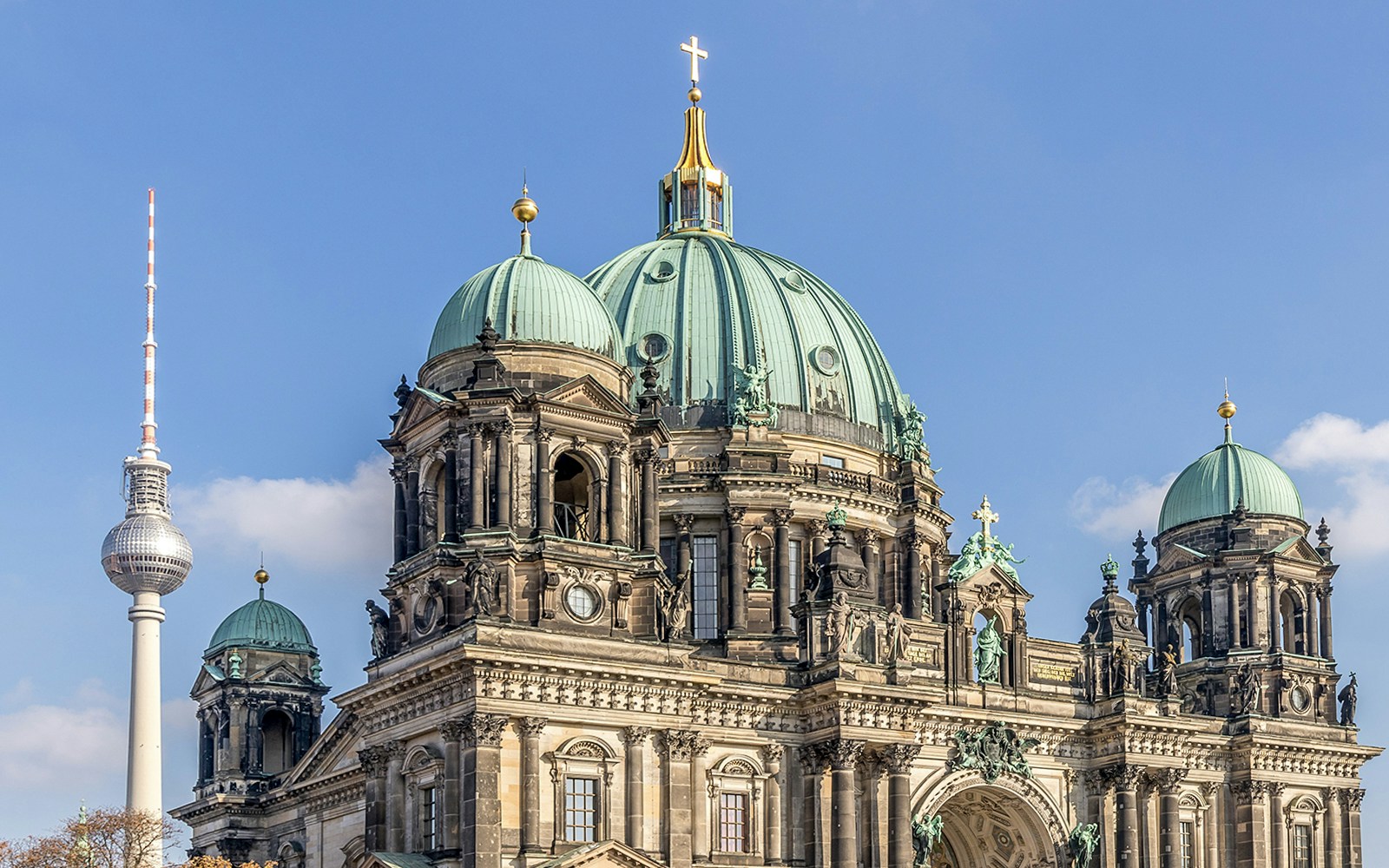
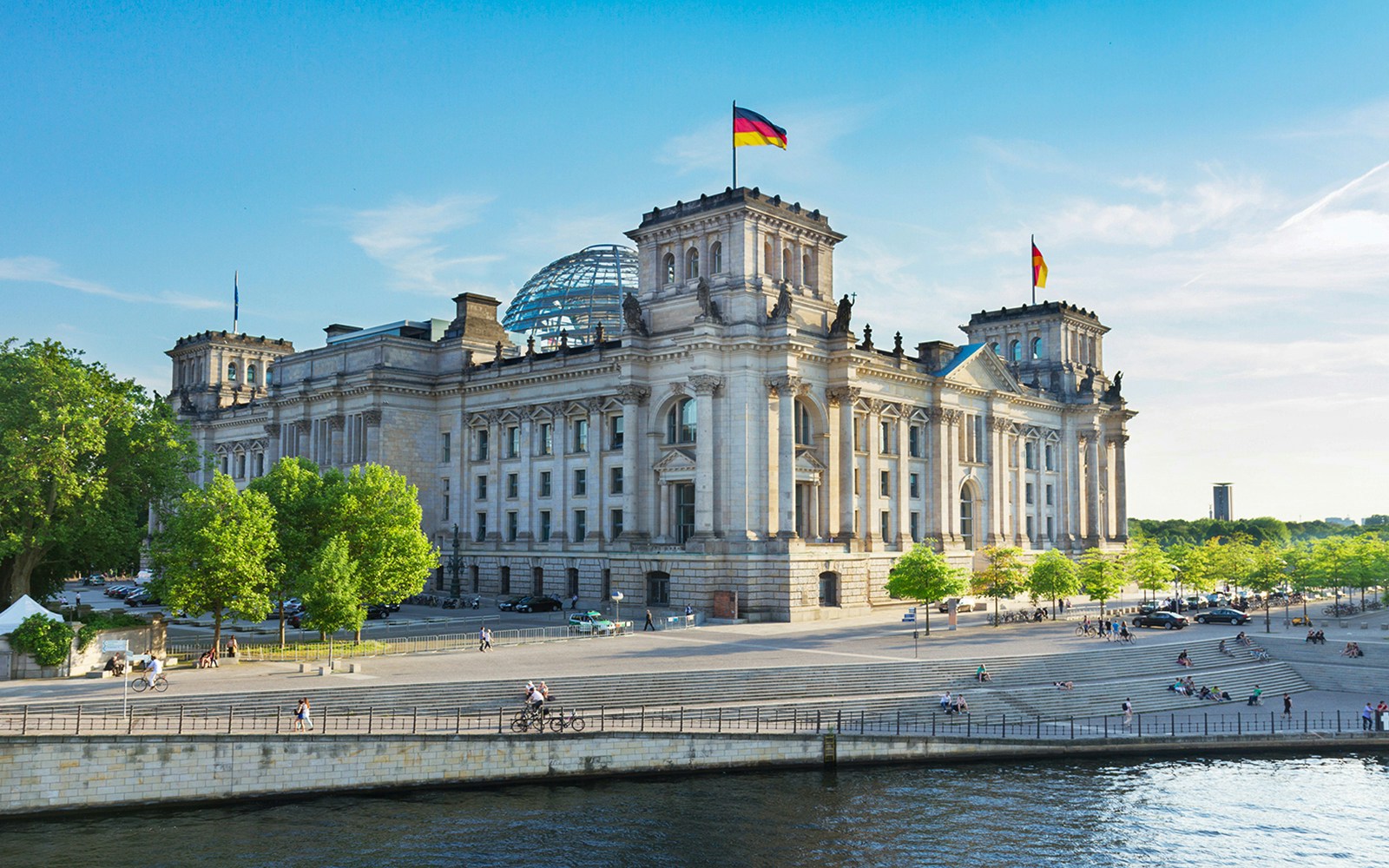
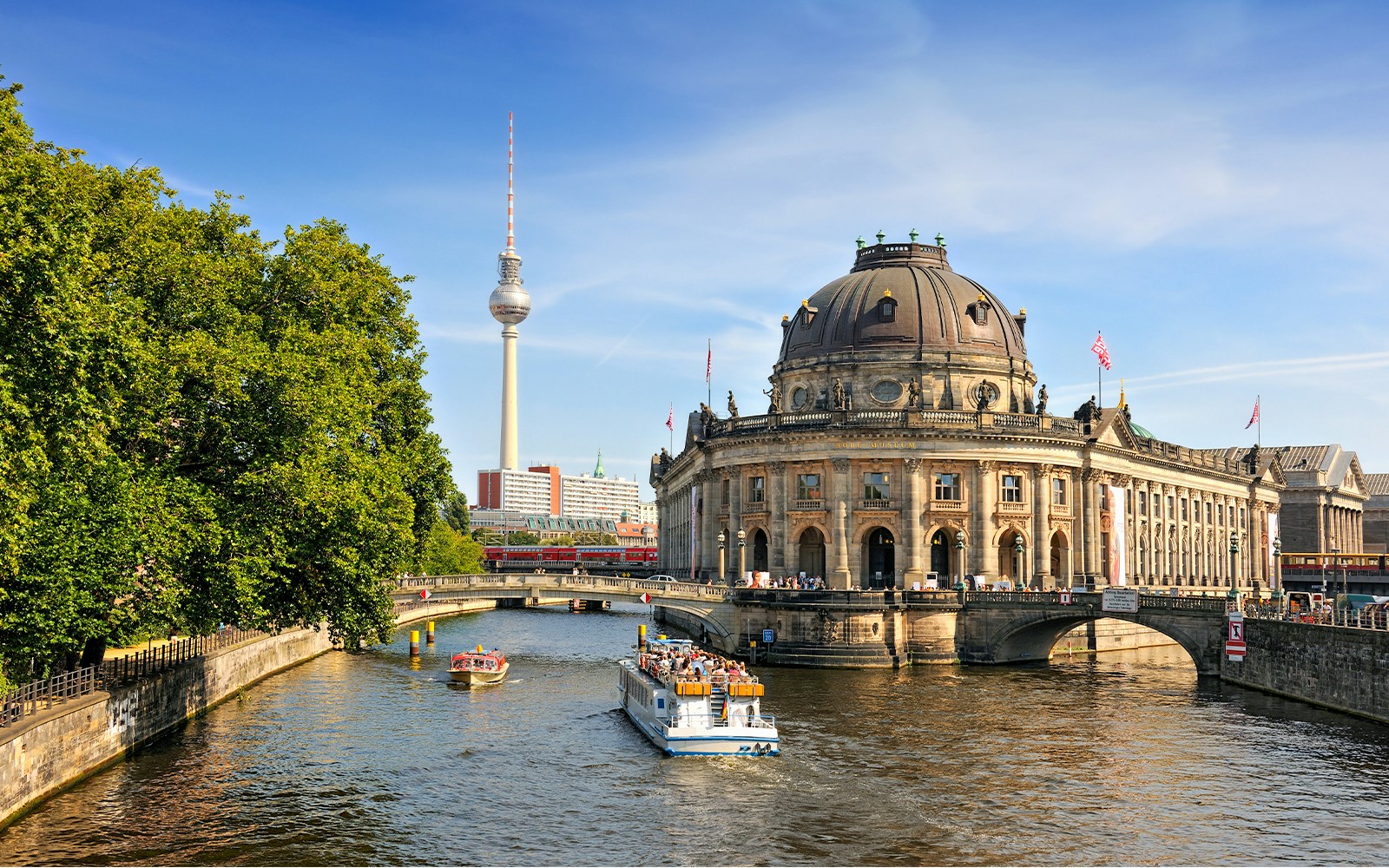
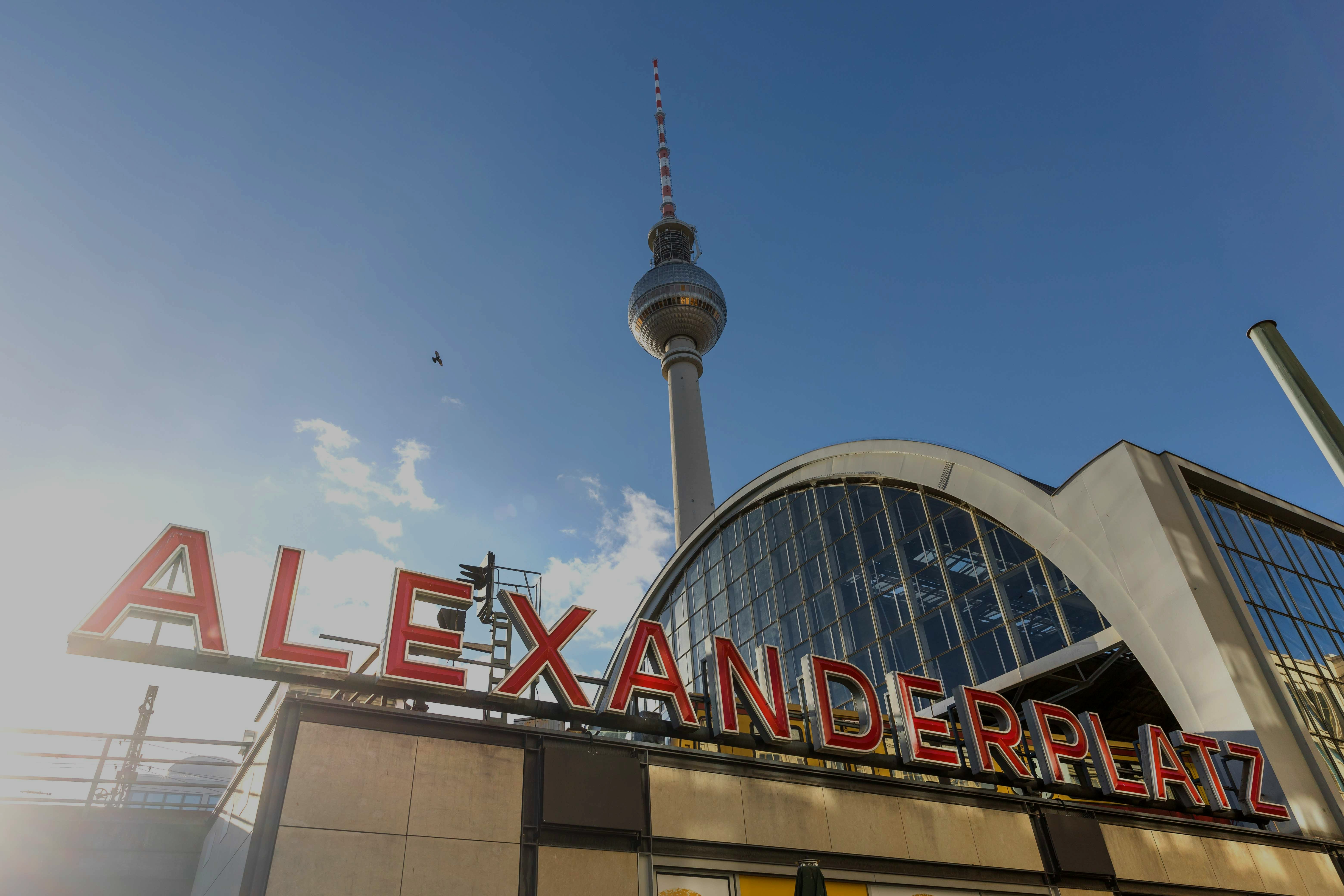
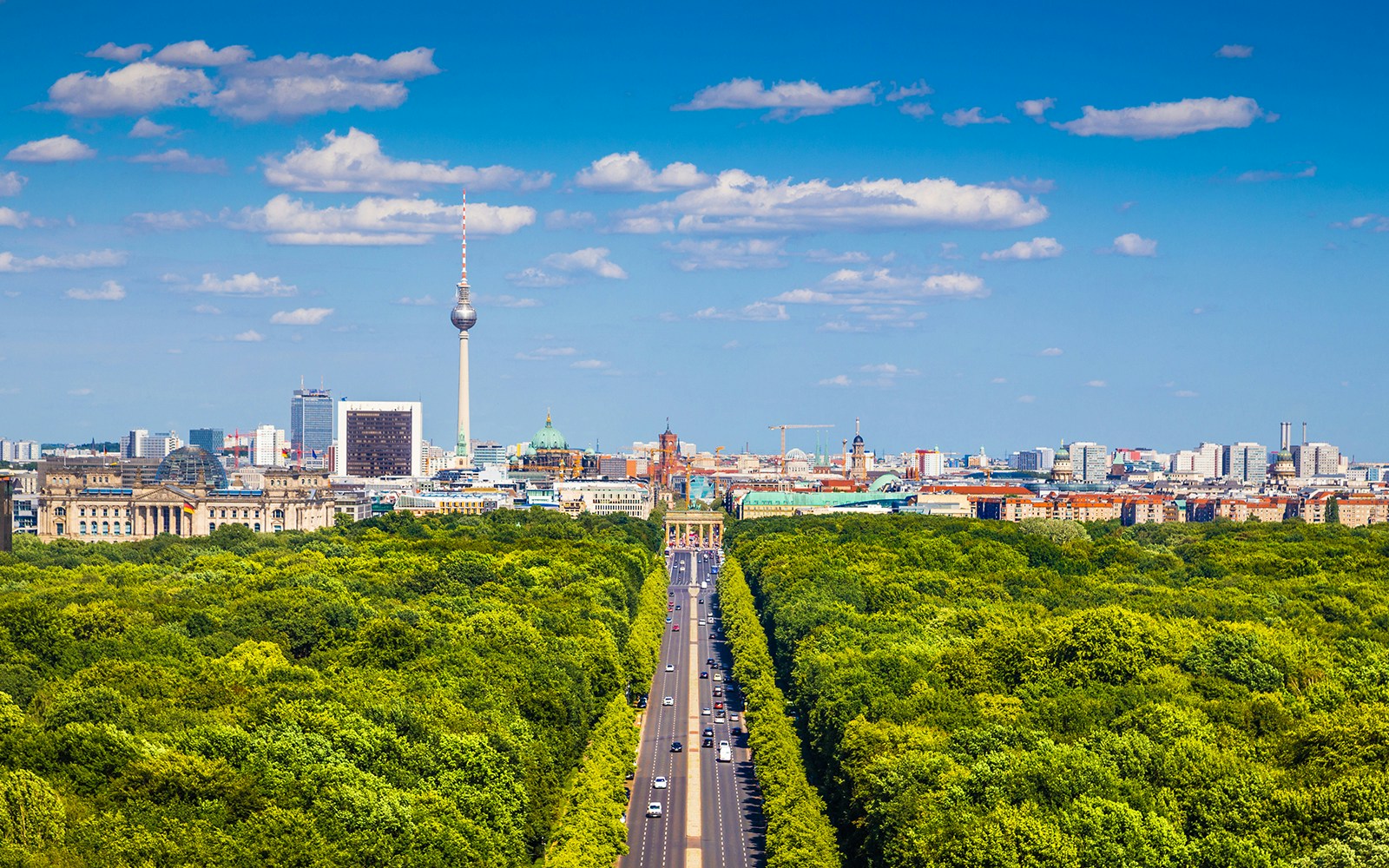

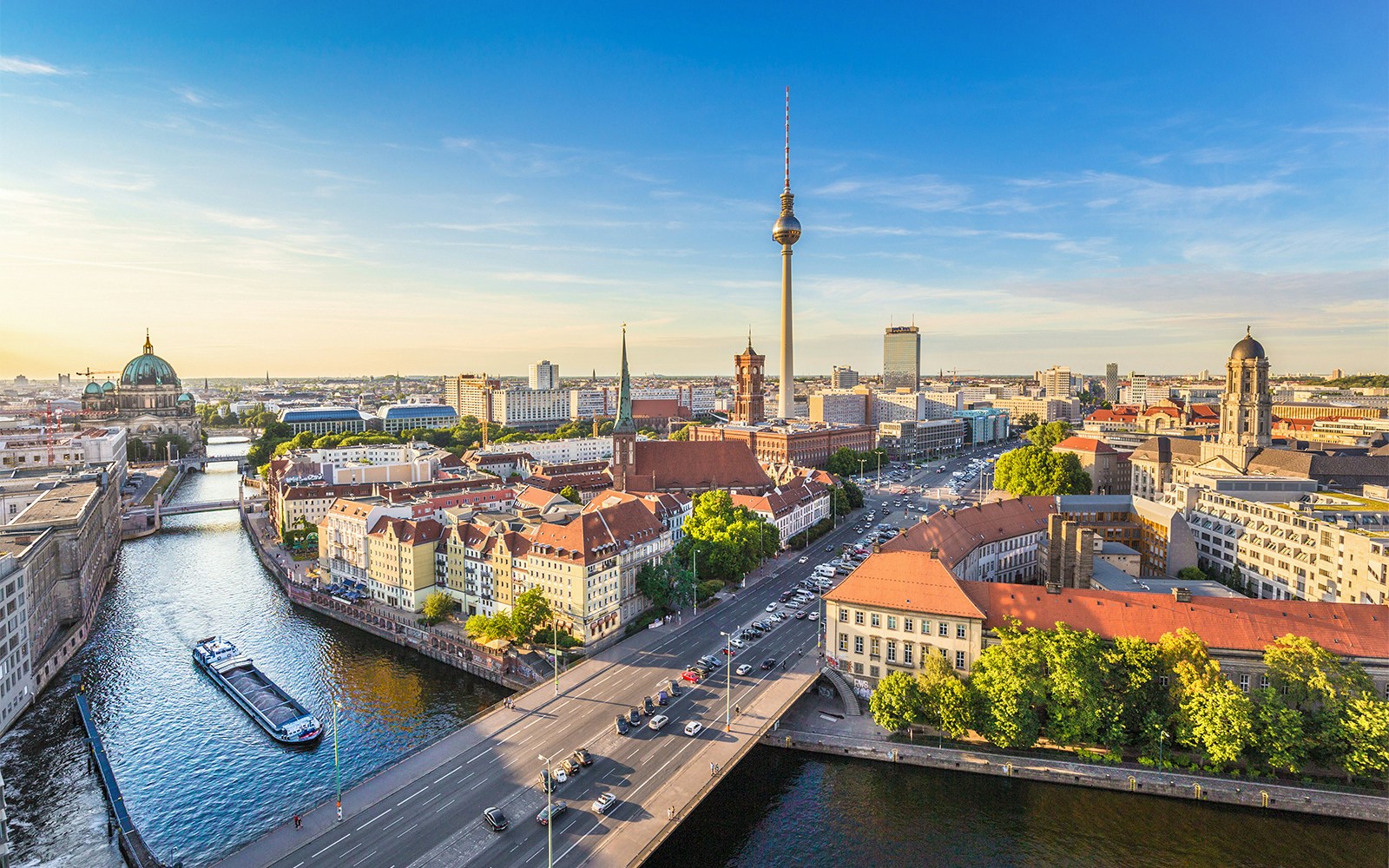
A brief history of the TV Tower
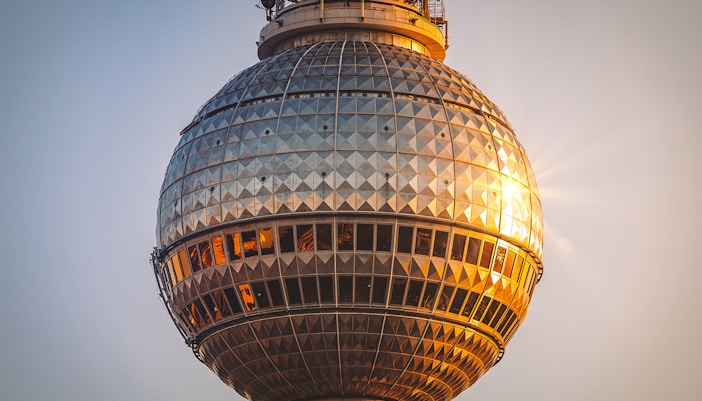
Background
The Berlin TV Tower has a history that reflects both the ambitions and divisions of twentieth-century Germany. Planned in the early 1960s and completed in 1969 by the East German government, the project was conceived at a time when Berlin stood as the epicenter of Cold War rivalry.
Berlin TV Tower history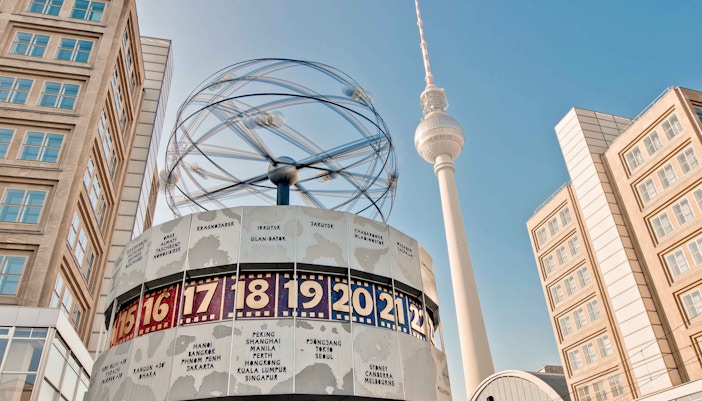
Location
It was strategically positioned near Alexanderplatz, ensuring that the tower could be seen across the city, and making it an unmistakable symbol of East German power.
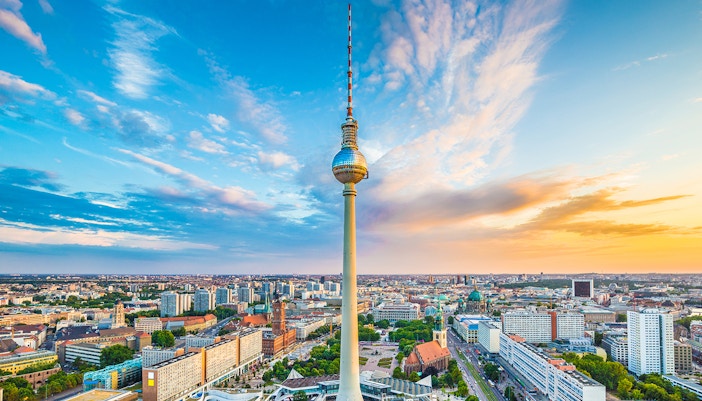
Berlin TV tower today
After the reunification of Germany in 1990, the Berlin TV Tower took on new meaning. No longer a symbol of division, it became a unifying emblem for the city as a whole. Today, it stands as both an architectural achievement and a popular attraction while continuing to serve as a broadcasting facility for television and radio signals.
Architecture & design of the Berlin TV Tower
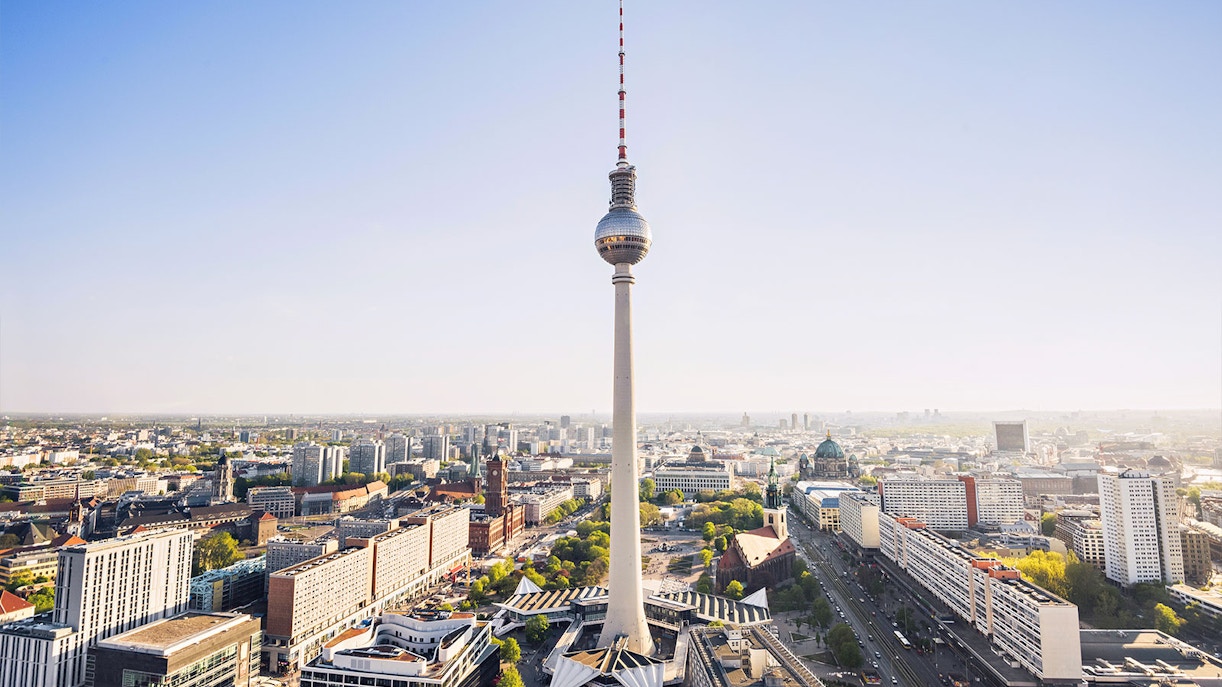
The Berlin TV Tower showcases a striking combination of modernist and socialist architectural styles. Its cylindrical concrete shaft rises to 368 meters, and the mirrored sphere at the top contains the observation deck and the revolving Sphere restaurant.
Structurally, the tower is a masterpiece. The tower’s design also accounts for wind resistance and vibrations, ensuring safety while maintaining its elegant silhouette. Its combination of sleek geometry, reflective surfaces, and advanced engineering techniques has made the Berlin TV Tower one of the most recognizable architectural landmarks in the world.
Frequently asked questions about the Berlin TV Tower
The tower was built as a Cold War symbol of East German ambition, towering above West Berlin’s skyline. Today, it stands as a unifying emblem and one of the most visited attractions in all of Germany.
The tower rises above Alexanderplatz, one of Berlin’s busiest squares. Its central location makes it easy to combine your visit with nearby sights like Museum Island, the Berlin Cathedral, and the historic Unter den Linden.
You can book Berlin TV Tower tickets online in advance to skip long queues. Choosing timed-entry slots ensures a smoother visit, and combination tickets often include the Sphere restaurant or the VR experience.
The tower officially opened in 1969, after four years of construction under East German leadership. At the time, it was designed to be a visible statement of socialist strength, seen across almost every part of the city.
Inside, you’ll find a 203-meter-high observation deck with panoramic views, the Sphere revolving restaurant, a souvenir shop, and the immersive VR attraction “Berlin’s Odyssey,” which brings the city’s history to life.
Most visitors spend about 1 to 2 hours, depending on whether they dine at the restaurant. There’s no time limit on the observation deck, so you can linger as long as you like.
Yes, evening visits are especially popular. The tower stays open late, and at night, Berlin transforms into a glittering map of lights, making it one of the most atmospheric times to go.
Yes! Families often enjoy the visit, with kids fascinated by the fast elevators and panoramic views. The restaurant also offers a child-friendly menu, making it an easy stop during a day of sightseeing.

